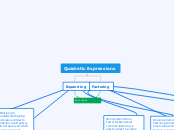realizată de Om Patel 6 ani în urmă
571
Quadratic Expressions
The text explains various algebraic techniques for simplifying and solving mathematical expressions. It begins with the difference of squares, highlighting how expressions in the form (

realizată de Om Patel 6 ani în urmă
571

Mai multe ca aceasta